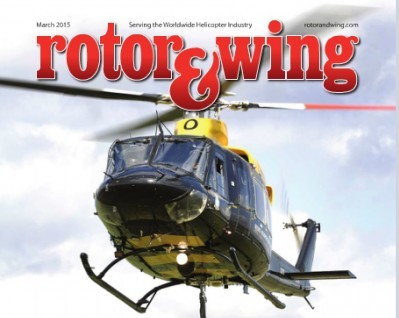Excerpt from https://www.aviationtoday.com/the-checklist/Robotic-Skies-A-Q-and-A-with-President-and-CEO-Brad-Hayden_84258.html#.VPsYLoHF_hN
By Katie Kriz, Assistant Managing Editor
Robotic Skies, an international network of Service Centers for commercial UAS, has gotten off to a promising start. Today, after one year in business, the company has nearly 60 repair stations across the globe, including its most recent one in South Africa. The company also recently completed its first repair and return-to-service of a service-drone G4 1.4 UAS. Rotor & Wing sat down with Robotic Skies President and CEO Brad Hayden to speak in-depth about the company, the UAS industry and the recent FAA/DOT NPRM on UAS.
RW: What is the goal of Robotic Skies?
BH: Our goal is to be working on not just the smaller systems, which is a lot of what’s flying right now and we see a lot of value in that, but we’re going to be doing the exact same thing for the bigger airframes when they start flying in the future. Robotic Skies really views this new UAS landscape as an extension of aviation, not an entirely new industry. We view it as a new market segment. I’ve spent the last year trying to raise awareness on UAS. It’s funny, when I first started, no one wanted to talk about it, pilots hated it, but now they’re starting to come around and realize that there could be opportunity in it.
RW: How might UAS alter a corporation’s current model?
BH: My message to the corporate flight departments is that companies are going to be replacing ground-based crews with more and more aircraft, albeit unmanned aircraft, it’s aircraft nonetheless. And really, who is more suited to evaluate, purchase, contract or operate those systems than the flight departments of today? So it really gives them more of an opportunity to be even more relevant to the bottom line of their corporations.
RW: Do you think AMTs be required to work on unmanned systems or will anyone with the capability be able to work on it?
BH: It depends on what kind of aircraft we’re talking about. If it’s over 55 pounds and it’s flying up in the NAS or it’s autonomous, that’s going to be a full-on certified aircraft and that’s going to be maintained by the same people that are maintaining the manned aircraft today. If it’s held to any standard, it will actually be a higher standard because again, it won’t have a set of eyes in the cockpit. So those aircraft are going to be maintained by the very people who are working on manned aircraft today. They’re going to be flying in and out of our airports and coming into our hangars, and we’ll be working on them there. So it’s a huge opportunity for us in that environment.

